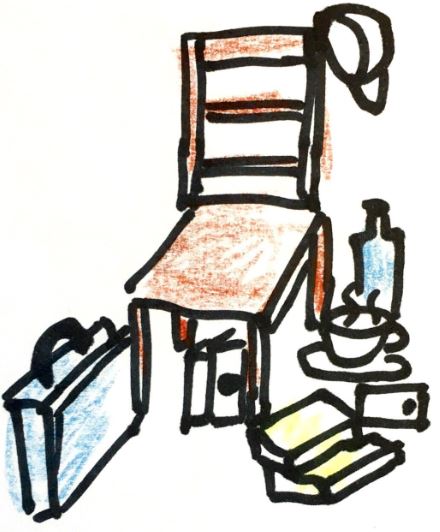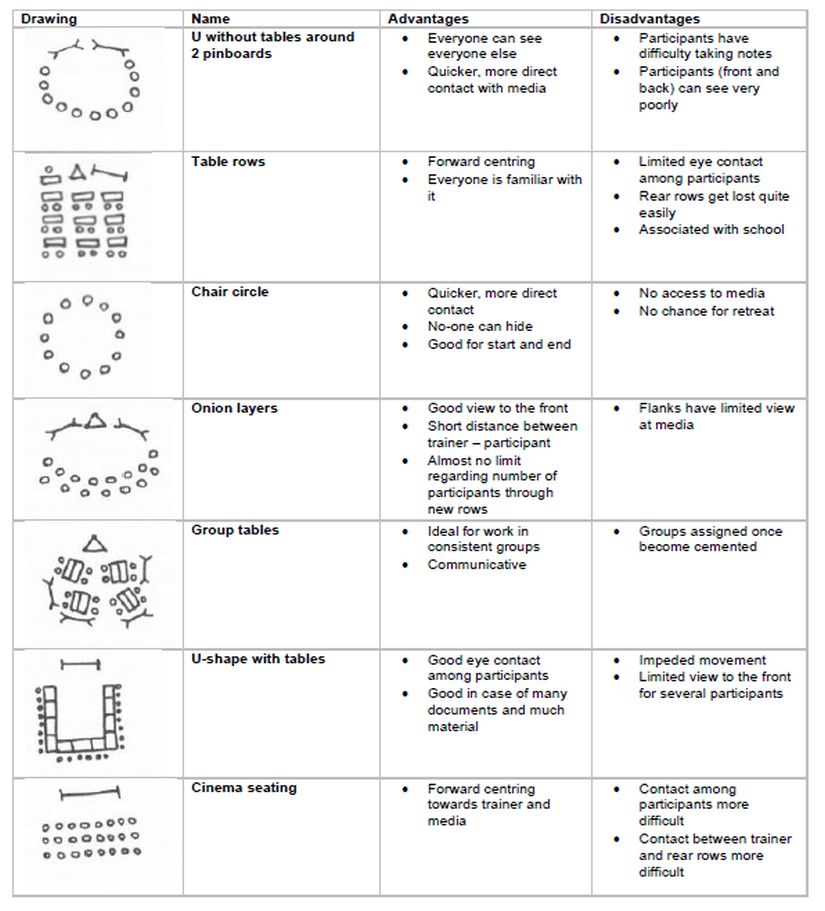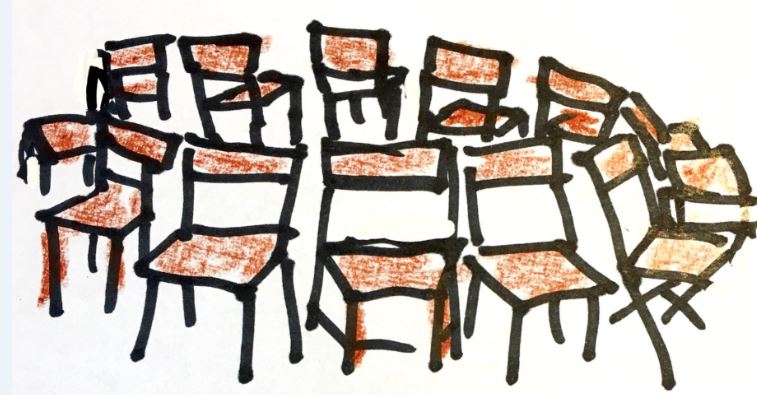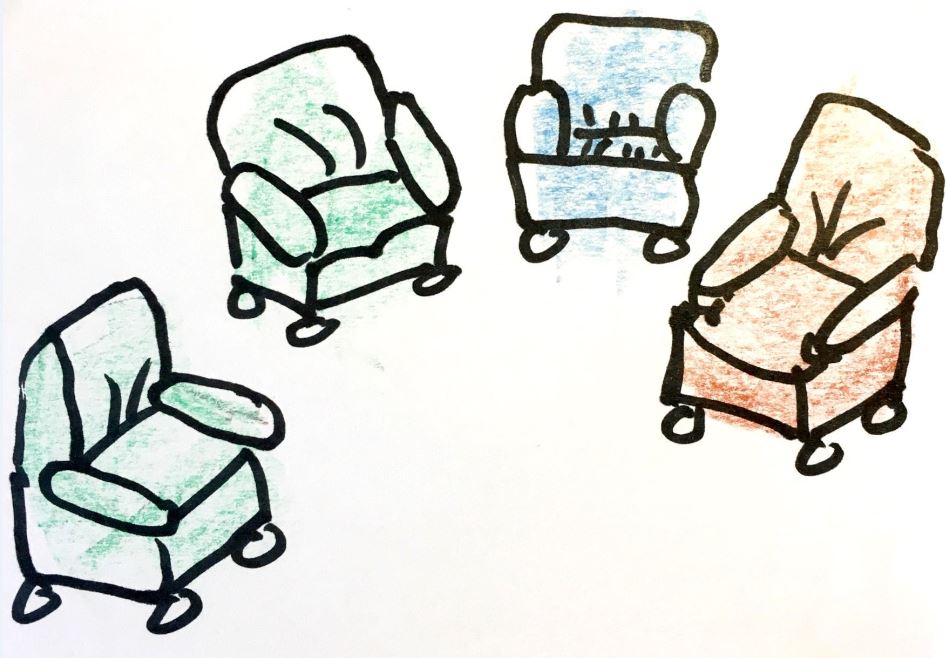
The chair circle is actually quite practical because it facilitates direct communication between all those involved in a seminar – everyone can look directly at everyone at any time. Nevertheless, it has become one of the things that increasingly annoy seminar participants.
Someone opens the door to the seminar room: „Oh dear, a chair circle! What is that going to be? I wanted to learn, not go to a self-experience group.“ More and more often participants articulate their displeasure about this seating arrangement: „I want / I need / I miss a table!“
Why a chair circle anyway?
More „senior” trainers still remember the times when the chair circle was introduced as an innovation.
- Away from sterile school or lecture hall seating (rows of tables one behind the other), which gave rise to negative associations with antiquated forms of teaching and learning!
- There was no more hiding behind tables.
- This also reduced the perceived distance between students and teachers, participants and trainers.
- Easier communication with each other. Finally, everyone can keep eye contact with each other.
- Circles of chairs support methods such as brainstorming, flashlight, murmuring groups, card inquiries and constellations.
Allergy triggers and disadvantages
Circles of chairs came into disrepute when they were used especially in „psycho“ seminars and esoteric circles, at Weight Watchers meetings and self-awareness groups. When elementary schools and kindergartens also introduced the morning circle with just this seating arrangement, a new negative cliché was born in the training. Allergies were not long in coming.
Actual disadvantages

- There is not enough space to put down personal belongings, especially for taking notes and documenting. This is a reason to do without circles of chairs, especially during longer courses and training. There are usually also folders or other documents. Even cups and glasses with drinks quickly become a problem without tables.
- Where to put the technology? More and more people use laptops and tablets and don’t like to work on their knees.
- „I don’t want to be on display.“ The advantage of „not being able to hide“ quickly becomes a disadvantage: Participants feel uncomfortable on this presentation plate, because it makes it impossible to temporarily withdraw from the event and slip into the role of observer.
What to do?
Basically we should be variable with seating arrangements and say goodbye to a chair circle monoculture. It is important that our participants learn and feel comfortable, not to enforce unloved methods or room designs.
In the case of longer trainings or courses, participants are better off creating their own learning environment, in which they work and live together for many hours.
Alternatives
There is the table block, if the group is not too large. Tables set up in a U-shape facilitate eye contact and communication, but at the same time form a massive barrier between trainer* and participants. Table groups are preferable (but not only) for longer training courses.
Well-equipped conference centres have completely variable seating options, for example small individual tables that can be easily combined to form double or group tables.
Some common seating arrangements

„Desensitization“ for chair circle allergy sufferers
Those who do not want to do without circles of chairs completely have the possibility of using this seating arrangement in a more „compatible“ way.

- Not always a chair circle! Often there is room for a chair circle and table groups or a table U in a seminar room and you can swap.
- Provide writing materials. Simple writing boards or special chairs with folding writing pads are practical.
- Storage possibilities between the chairs. These can be stools or small tables. There are conference houses that place fabric covered foam cubes (approx. 50cm edge length) between chairs. Then the participants do not „stick“ so closely together.

Confusion of language
In Germany, a chair circle would be a round of upholstered furniture or wing chairs. The German word „Stuhlkreis“ tends to evoke disgust in Austria. In English it is again simple: chair circle.
Author: Ulli Lipp
Translation: Astrid Donaubauer
Read original article in German.

Dieses Werk ist lizenziert unter einer Creative Commons Namensnennung-NichtKommerziell-Weitergabe unter gleichen Bedingungen unter gleichen Bedingungen 3.0 Österreich Lizenz.
Volltext der Lizenz

